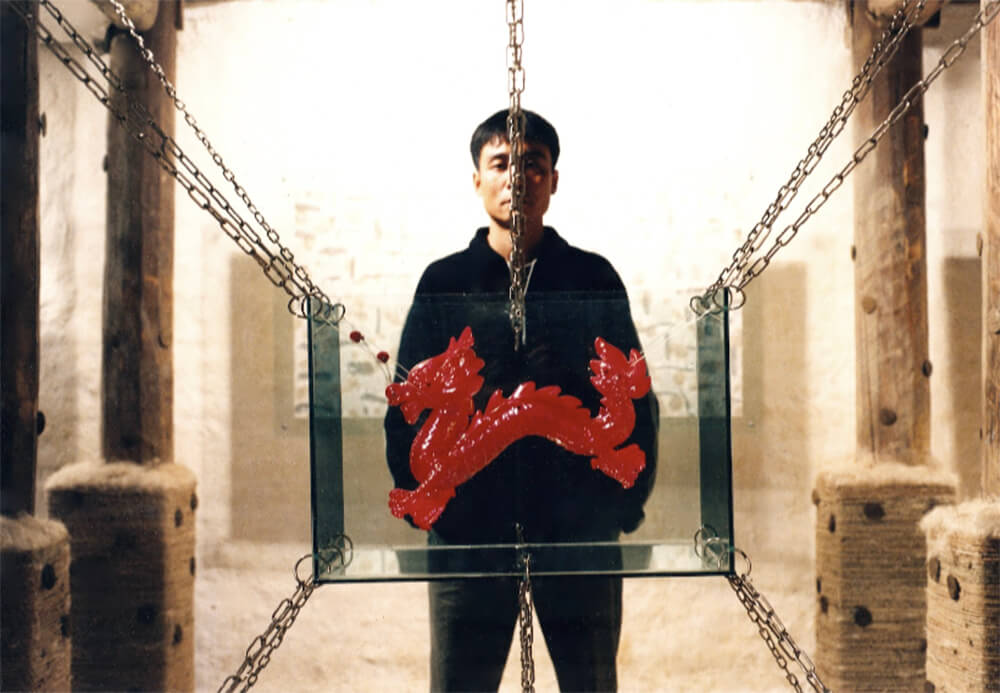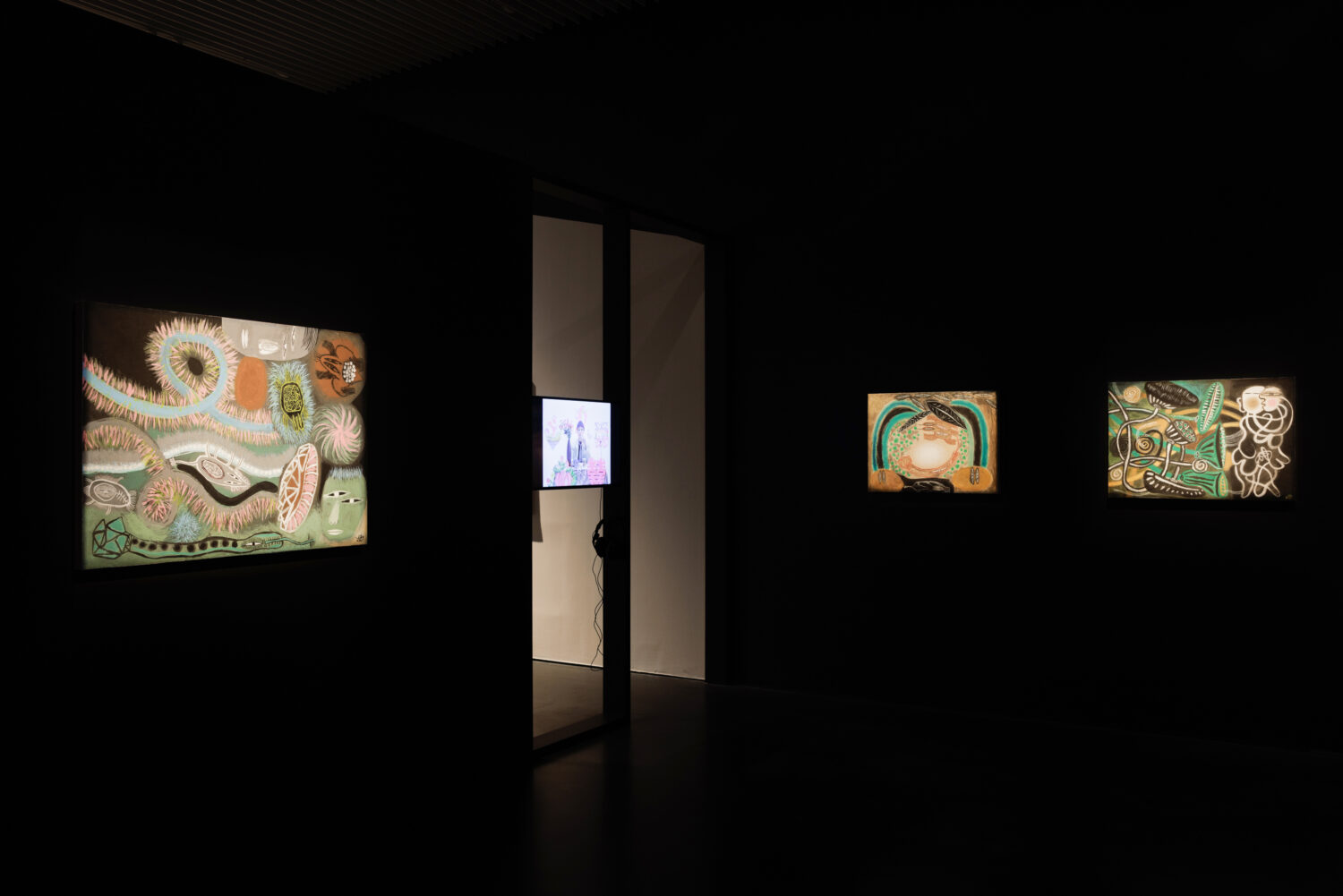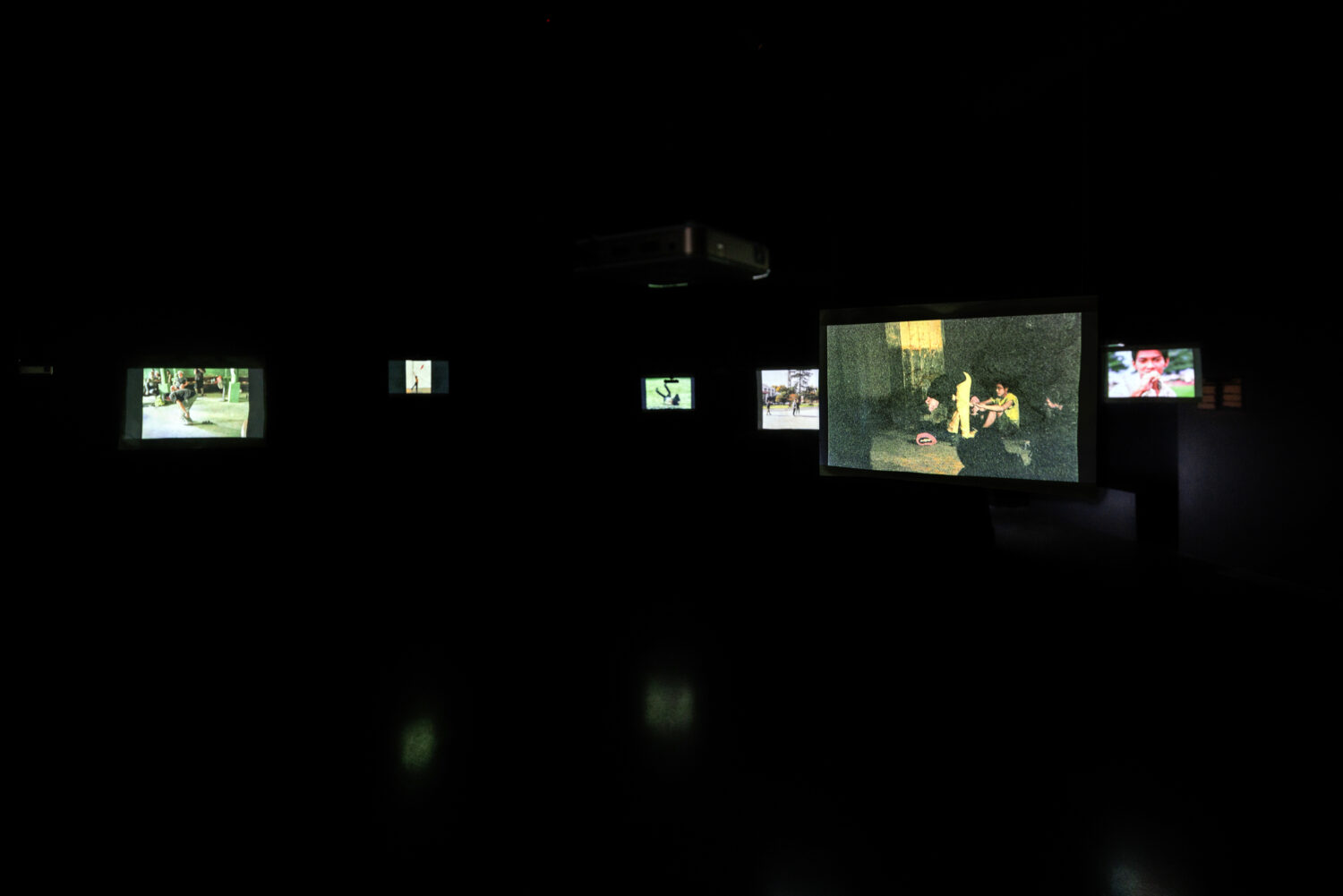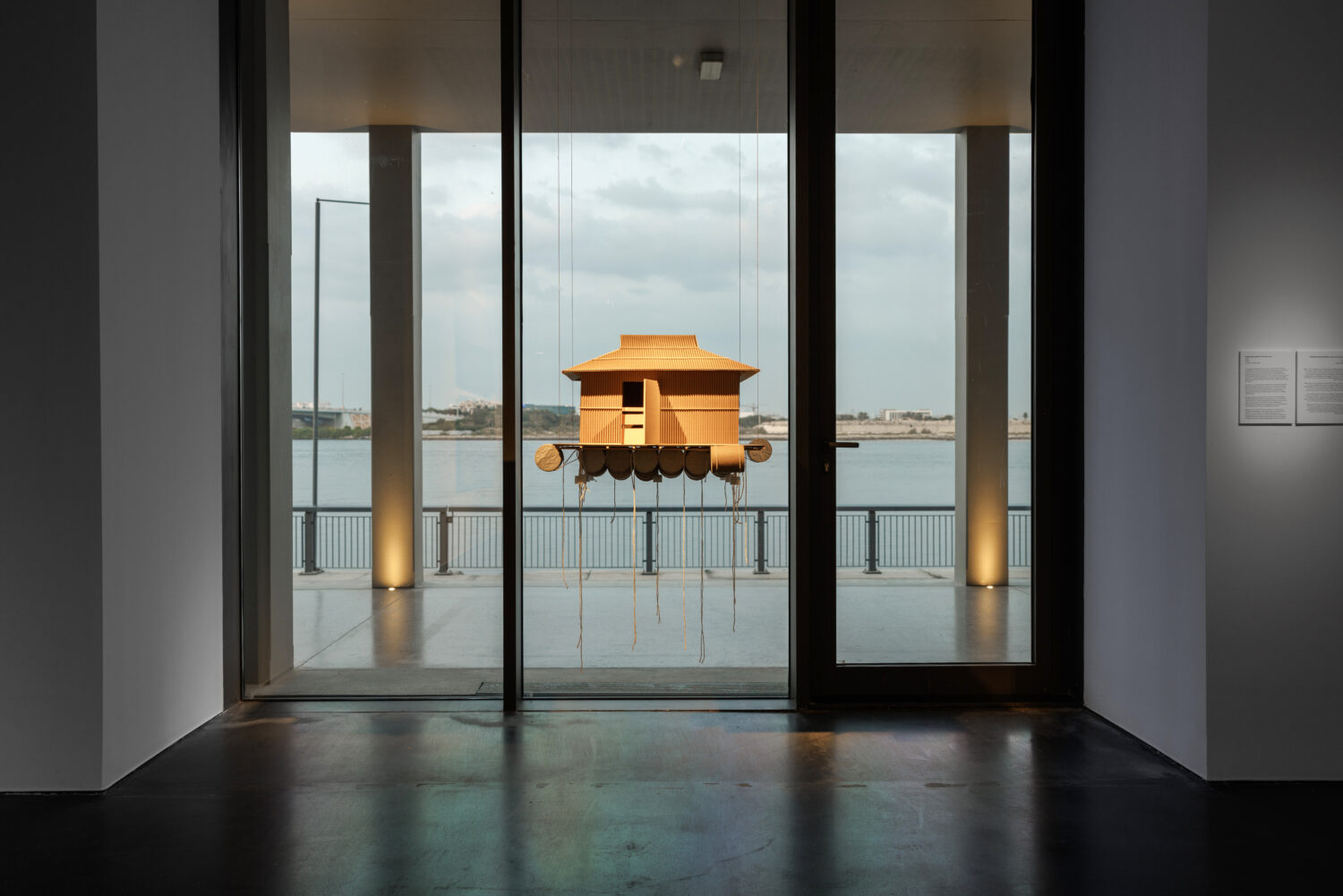Inside the World of Trần Lương, Vietnam’s Performance Art Pioneer
By Keshav AnandDubai’s Jameel Arts Centre hosts the first international retrospective of the prolific Vietnamese artist, Trần Lương. An influential figure in his home country, the artist’s work is lesser known outside of South East Asia—though it seems like that’s imminently going to change. Following its presentation in the United Arab Emirates, the new exhibition, titled Tầm Tã – Soaked in the Long Rain, is set to travel to the Govett-Brewster Art Gallery | Len Lye Centre in New Zealand, and later, The Art Gallery of Western Australia.
Born in Hanoi in 1960, Trần was one of the earliest artists to explore performance and video art in Vietnam. He played an instrumental role in fostering a homegrown art community, co-founding the Gang of Five collective, which operated from 1983 to 1996, and hosted monthly exhibitions in unconventional venues. In 1998, he established Nhà Sàn Studio, the first experimental artist-led space in the country. His evolution from commercial painter to conceptual artist and eventually mentor and facilitator is fascinating and well-told through the retrospective curated by Biljana Ciric.

Upon entering the exhibition, you are submerged into a watery universe populated by uncanny creatures, familiar in a way but like something viewed under a microscope. Tendrils and eyes poke and peer out of canvases, with serpents and amoeba-like forms contorting among aquatic plants. Water is an ever-present motif in Trần’s work, and one that you are reminded of even when looking outside through the galleries’ windows—Jameel Arts Centre is situated on the Bur Dubai bank of the Dubai Creek, a natural port that has traditionally been used for trade and transport.
While researching Trần’s practice ahead of my visit to the exhibition, I found few images and little information about his early paintings online. In conversation with Art Jameel’s Director, Antonia Carver, she mentions the effort involved in collating these works, with many pieces difficult to locate, sold to largely untraceable buyers early in Trần’s career. It’s a privilege to see these works together in person.
Trần tells me: “Looking back to the early years of my life, in 1965, when I was five, my parents came to me one day and said that I wouldn’t have piano lessons anymore the following week. I was born into a comfortable family of intellectuals and artists. I asked, “Why?” They said I had to move to the countryside because the Americans were coming soon. And just one week later, I had to go with a group of children. I was born a city boy but life totally changed… I asked one night, “When can we come back?” They said, “Maybe in one week, or at most, one month.” But you know, that period became seven years. It wasn’t seven years straight; we would come back to the city from time to time. But there was no school during those seven years because of all the fighting and bombing.”

He continues: “All day I would hang around in rice fields, like a real country boy, fascinated by underwater life. I spent a lot of time sitting beside the canal or pond, watching something underneath. It’s really amazing—small shrimp, small fish, delicate grass… So the life underwater, for me, is like a mystic world, and it’s a peaceful world, in contrast with our daily life… In my early works, the underwater scenes don’t look exactly realistic. They are imprinted with my amazement, mixed with religion, mixed with fairy tales.”
Following the first two galleries, a drastic shift occurs in Trần’s oeuvre, when painting is abruptly replaced with performance and video. The artist played a key role in bringing performance art to Vietnam from the late 1990s through the 2000s. In several of his pieces, Trần repeats everyday actions, believing that such gestures hold profound power, embodying both collective and personal memory. The materials he uses in his performances are practical, commonplace and locally sourced: a red scarf, a bamboo whip, plastic bottles, clothes, a toothbrush, and, most consistently, his own body—the only material in Trần’s eyes that cannot be censored. Many of his works have been re-enacted in various locations around the world, and these re-stagings, while incorporating local contexts, are central to the development of his artistic practice.
“It was like a sudden break when I quit painting in 1997… I started to change my approach. I didn’t want to be the best-selling artist… After going to Europe and America, I really felt disappointed that my colleagues, my friends, and maybe even myself, at times—we compromised so much for money. They would put dollars on the table and ask us to paint in this or that direction, and we would. So, in 1997, I suddenly decided to create what you might call conceptual performance. I told people that I had stopped painting. From my experience, the free market, meaning capitalism, not only brings us vitamins, but also poison. My family asked me, “Are you crazy, or are you stupid? Why did you stop painting?” Because at that point, painting was paying the bills, and life was very comfortable. But I said I would temporarily stop for ten years,” Trần reflects.

Tầm Tã – Soaked in the Long Rain shines light on a selection of Trần’s most significant performance works, presented through a series of images that offer insight into his process. Various tableaux flash simultaneously before you in a dimly lit room: one shows the artist submerged in a makeshift pond, another captures him bent over, reaching out to an audience with his arm stretched between his legs, and another depicts him precariously balancing a large bottle of water filled with live goldfish in his open mouth. The images are projected onto paper, drawing a connection to his 2003 performance, Sweaty. In this piece, Trần pressed and rubbed white sheets of paper against his body, allowing them to absorb sweat and dust. This act references the practice of stone-rubbing, a technique commonly employed to preserve and study antiques.
Displayed in the same section of the exhibition is the 2015 work, Mạo Khê Coal Mine Project, commissioned by the National Gallery of Singapore. Trần organised field trips, inviting artists to engage with marginalised communities through direct interactions. In 2001, he arranged a two-week visit to the Mạo Khê coal mine in Quảng Ninh, with eleven artists. Mạo Khê was not only a key mining site in northern Vietnam but is also significant in the history of the Vietnamese Communist Party as the site of the first Party cell in the Quảng Ninh area. Through this collaborative project, Trần sought to take art beyond the traditional gallery space, bringing it to the miners and fostering critical discussions on living conditions, social issues, and the broader role of art in everyday life.

Today, Trần is most concerned with supporting future generations. In 2020 he co-founded the Center for Art Patronage and Development (APD) in Hanoi. “I tend to focus more on mentoring and thinking about infrastructure than on my own work. As a result, I make less of my own work because I spend my time on social development projects, educating young people, and thinking a lot about changing the environment. While trying to build APD, it felt like I didn’t even have an hour to learn about philosophy, but we need it. We need spaces like this here. I mean, Vietnam needed it, as you can see from our centre today. We founded it five years ago,” he tells. As Director of APD’s programmes since the organisation’s inception, Trần’s vital work continues.
Trần Lương: Tầm Tã – Soaked in the Long Rain is on view at Jameel Arts Centre until 18 May 2025.
The exhibition is accompanied by the first comprehensive publication exploring the practice of Trần Lương—available for purchase at the Art Jameel Shop—tracing the impact of Trần’s artistic and institutional practice on the wider art scene of South East Asia and beyond and including contributions by Iola Lenzi, Phoebe Scott, Lê Thuận Uyên, Vu Duc Toan, Linh Lê, and Biljana Ciric.
Feature image: Tầm Tã – Soaked in the Long Rain by Trần Lương. Courtesy of Art Jameel. Photography by Daniella Baptista